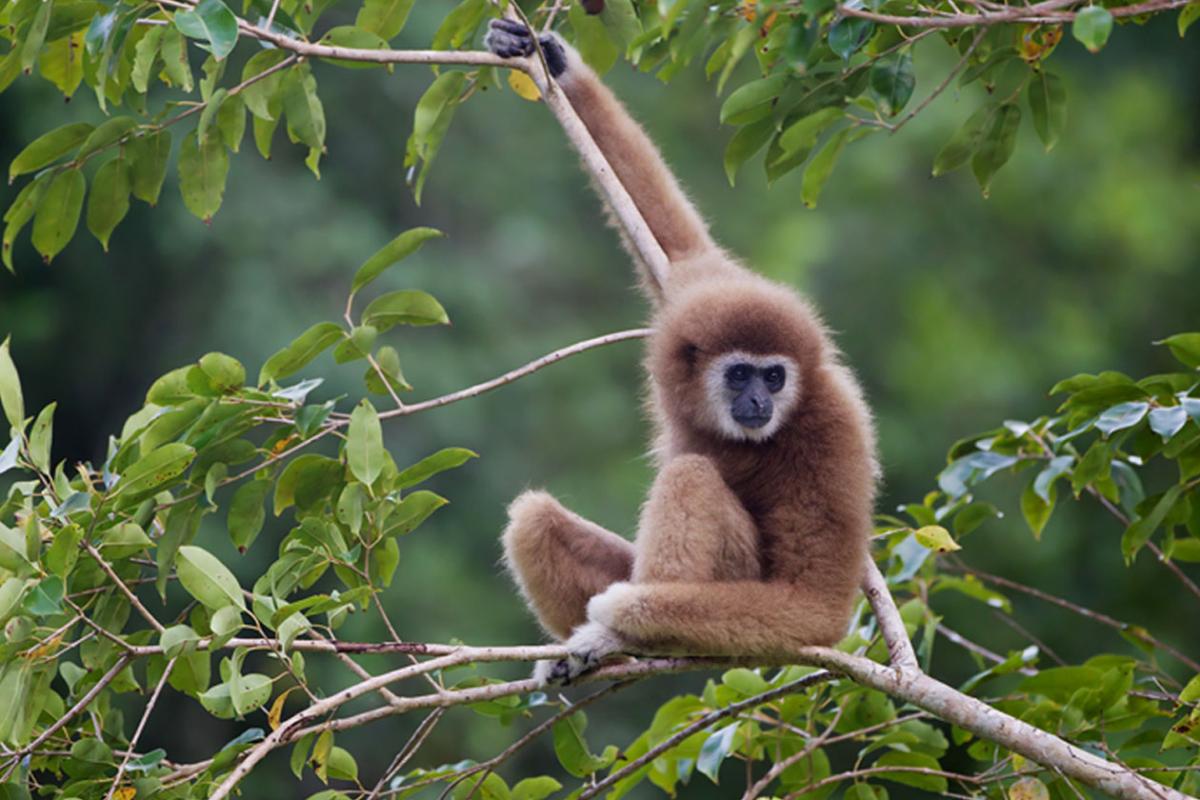What’s your favorite playground equipment? The slide? The jungle gym? Me, I always liked the monkey bars. It turns out they’re aptly named: Today’s A Moment of Science examines brachiation, which is how apes and monkeys swing through the trees.
Brachiation is when you swing, suspended, from one handhold to another. Orangutans, spider monkeys, and chimpanzees can brachiate, but gibbons do it most often. Long arms and fingers, and mobile shoulder joints, help them move easily from branch to branch. It’s a quick, coordinated, and graceful movement.
If brachiation sounds fun, that’s because it is! Humans can brachiate, too. Remember those monkey bars? They were my favorite because I loved the feeling of swinging from bar to bar. I’d grab the first bar with my right hand, then swing out over the dirt. Then I’d grab the next bar with my left hand, and repeat the process.
That kind of movement is called “continuous contact brachiation.” That’s when you always have one hand on a bar or rope. Or, if you’re a gibbon, it means you’re always holding onto a branch. This kind of brachiation is smooth and safe, because it can be dangerous to miss a handhold when you’re high above the ground. Think of it as the equivalent to walking.
Then there’s “ricochetal brachiation.” Like its name suggests, this kind of movement is powerful and fast, like a ricochet. A gibbon will swing out from a hold and then let go, flying through the air in an arc, before grabbing the next hold. Think of it as the equivalent to running.
As gibbons might say, who needs monkey bars when you live in the trees?









